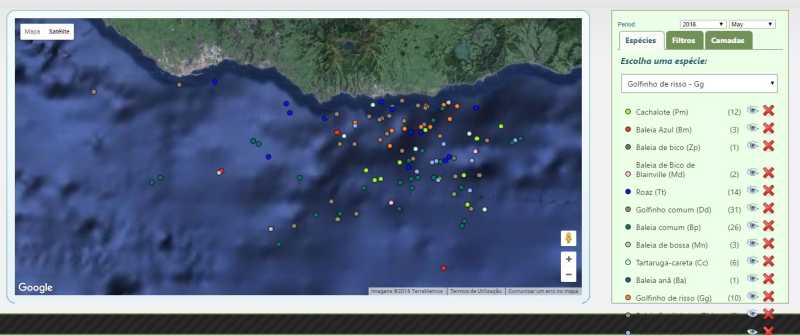
On the map above, we can see the spatial distribution of our sightings during the month of May along the South coast of São Miguel.
NOTE: To see the interactive map please visit http://www.monicet.net/en/maps
We sighted 13 different species of Cetaceans and 1 species of marine turtles! 🙂
Of these, five species were Baleen Whales: Blue whales (Bm), Fin whales (Bp), Sei whales (Bb), Northern minke whales (Ba) and Humpback whales (Mn);
Two were Toothed whales: Sperm whales (Pm) and Blainville’s beaked whales (Md);
Five species were Dolphins: Bottlenose dolphins (Tt), Risso’s dolphins (Gg), Striped dolphins (Sc), Short-finned pilot whales (Gma) and Common dolphins (Dd);
And, finally, one species of turtle: Loggerhead turtle (Cc).
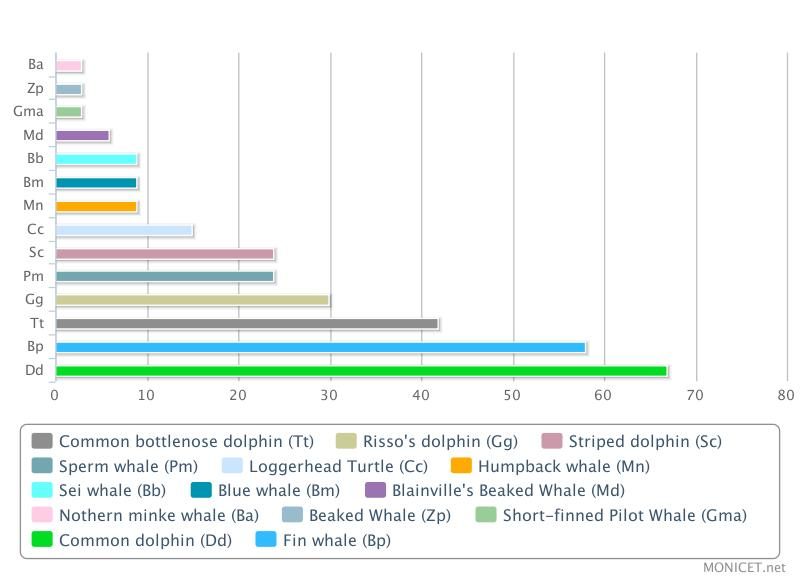
We sighted our first Sei whales of the 2016 Season having seen them in 9 different occasions!
Adult Sei whales can reach 21 meters in length and weight 15 to 30 tons. Females are, like usual in baleen whales, larger than the males, and calves are born with 4.5-5 meters and 0.65 tons.
These whales are famous for and easily distinguished by their very tall dorsal fin when compared to other baleen whales.
Being one of the fastest-swimming of the great whales and usually shy of boats we have been very lucky in being able to see them calmly going about their lives in their natural environment.
Like we can confirm in our encounters, these whales tend to travel alone or in pairs, ocasionally in groups up to 5 individuals.
Mainly at dawn, they feed on zooplankton, small schooling and squid using their baleen plates as filters.
Different populations exist in the North and South Hemisphere. It’s found almost everywhere including subartic and subantarctic waters in the summer, migrating to warmer subtropical waters in the winter. They can live up to 70 years of age!
It was a month of firsts and we also had our first Short-finned Pilot Whales of the season!
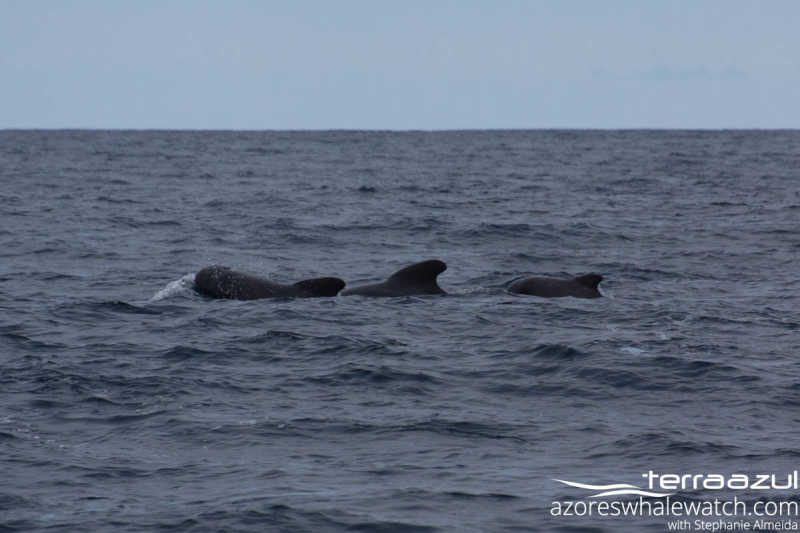
Pilot Whales / Globicephala macrorhyncus
Despite their name, Pilot whales are actually dolphins! These animals usually travel in groups of 15 to 50 individuals but can potentially reach several hundreds. In these groups there is usually one adult male to every 8 adult females that usually stay during their whole lives with the group they were born in.
With Pilot whales is quite easy to tell the gender apart as the males being usually bigger, around 6.8 meters, with a larger, more swollen head, and a very broad based and hooked dorsal fin. Females are usually around 5.5 meters and newborns 1.4 to 1.9 meters.
These dolphins are generally abundant in tropical and warm-temperate areas. They feed mainly on squid but can also take some octopus and fish, being able to dive for 27 minutes and reach 800 to 900 meters depth to get it.
So these are the statistics and some of the highlights for the month of May 🙂
Stay tuned for more updates on our tours to the fantastic world of the Whales and Dolphins!

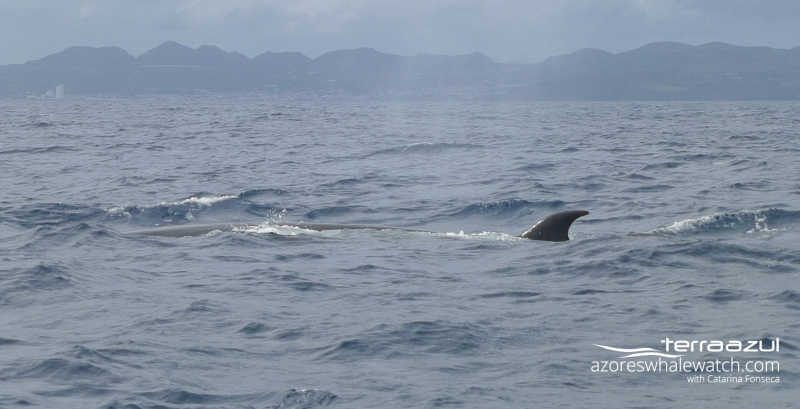











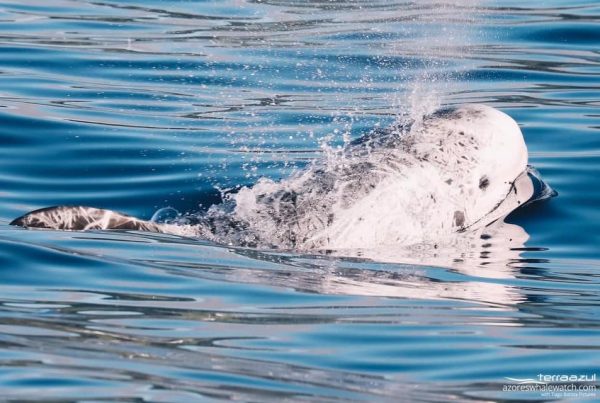
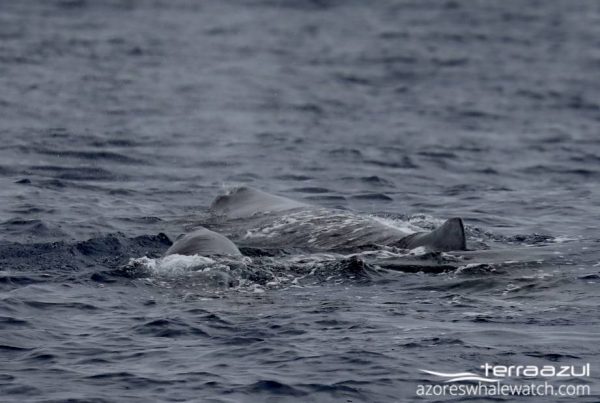
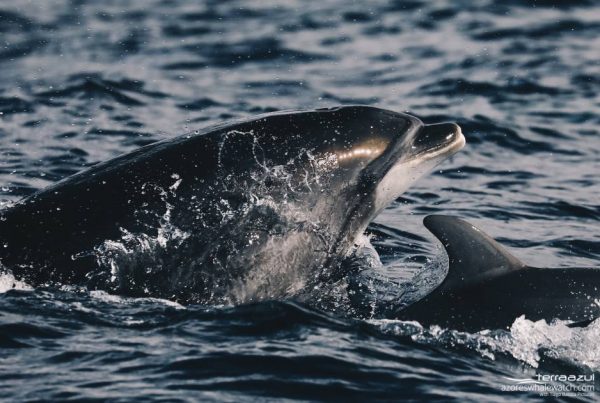



Your thoughts on this?